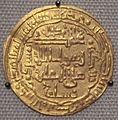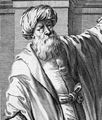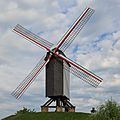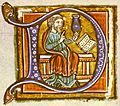Abbasid Caliphate facts for kids
Quick facts for kids
Abbasid Caliphate
اَلْخِلَافَةُ ٱلْعَبَّاسِيَّةُ
|
|||||||||||||||||||||||||
|---|---|---|---|---|---|---|---|---|---|---|---|---|---|---|---|---|---|---|---|---|---|---|---|---|---|
|
|||||||||||||||||||||||||
|
Black Standard
|
|||||||||||||||||||||||||
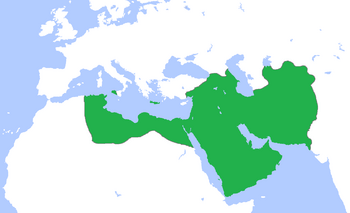
Abbasid Caliphate at its greatest extent, c. 850
|
|||||||||||||||||||||||||
| Status |
|
||||||||||||||||||||||||
| Capital | |||||||||||||||||||||||||
| Common languages | Classical Arabic (central administration); various regional languages | ||||||||||||||||||||||||
| Religion | Sunni Islam | ||||||||||||||||||||||||
| Government | Caliphate | ||||||||||||||||||||||||
| Caliph | |||||||||||||||||||||||||
|
• 750–754
|
As-Saffah (first) | ||||||||||||||||||||||||
|
• 1242–1258
|
Al-Musta'sim (last Caliph in Baghdad) | ||||||||||||||||||||||||
|
• 1508–1517
|
al-Mutawakkil III (last Caliph in Cairo) | ||||||||||||||||||||||||
| History | |||||||||||||||||||||||||
|
• Established
|
750 | ||||||||||||||||||||||||
|
• Disestablished
|
1517 | ||||||||||||||||||||||||
| Currency | |||||||||||||||||||||||||
|
|||||||||||||||||||||||||
The Abbasid Caliphate was a powerful Muslim empire. It was the third major caliphate in Islamic history. A caliphate is a state led by a caliph, who is seen as a religious and political leader. The Abbasids ruled a vast area for over 500 years.
The Abbasids were descendants of Muhammad's youngest uncle, Abbas ibn Abd al-Muttalib. They took over from the Umayyad Caliphate in 750 CE. They moved their capital from Harran to Baghdad in 762 CE. This new capital became a center of learning and culture.
Contents
Rise of the Abbasid Caliphate
The Abbasid family led a revolution against the Umayyad rulers. They believed the Umayyads were not fair. In 750 CE, the Abbasids won control. They became the new leaders of the Muslim world. Only the Umayyad rulers in Al-Andalus (Spain) remained independent.
The Golden Age
The Abbasid Caliphate was very strong for about 200 years. This time is often called the Islamic Golden Age. During this period, there was great progress in science, math, medicine, and art. Scholars translated many ancient texts into Arabic. They also made their own new discoveries. The city of Baghdad grew into one of the largest and most important cities in the world. It was a hub for trade and knowledge.
Challenges to Abbasid Rule
Even though the Abbasids were powerful, other groups challenged them.
- The Fatimid Caliphate started in North Africa in 909 CE. They claimed to be descendants of Muhammad through his daughter. They created their own line of caliphs. The Fatimids ruled areas like Egypt and Palestine.
- The Umayyad dynasty in Spain also claimed the title of Caliph in 929 CE. This meant there were three different caliphs at one time.
The Abbasids worked to keep their power. They fought to limit the Fatimids' rule. Eventually, the Fatimid dynasty ended in 1171 CE. The Umayyad caliphate in Spain also ended in 1031 CE.
Important Leaders
One important Abbasid caliph was Al-Mutawakkil. He was the tenth caliph. He helped introduce the study of Hadith. Hadith are sayings and actions of the Prophet Muhammad.
The End of the Caliphate
The Abbasid rule in Baghdad ended in 1258 CE. This happened when Hulagu Khan and the Mongols attacked. They sacked Baghdad, causing a lot of destruction. The last Abbasid caliph in Baghdad, Al-Musta'sim, was killed.
However, the Abbasids continued to claim religious authority. They moved their base to Cairo, Egypt. They stayed there until 1517 CE.
Related pages
Images for kids
-
Folio from the Tarikhnama depicting As-Saffah, the first Abbasid Caliph.
-
The city of Baghdad between 767 and 912 CE.
-
Battle of Talas, 751. This battle was important for the spread of paper-making.
-
Siege of Baghdad by the Mongols in 1258.
-
Jabir ibn Hayyan, a pioneer in organic chemistry.
-
Ibn al-Haytham, known as "the father of Optics."
-
Remains of a large circular pool in the Dar Al-Baraka Palace, built by Al-Mutawakkil.
-
Zumurrud Khatun Tomb (1200 CE), in Baghdad.
-
9th-century wall painting fragments found in Samarra.
-
Bowl with Kufic Inscription, 9th century.
-
Qasr al-'Ashiq palace in Samarra, built between 877–882 CE.
-
Illustration showing a water clock given to Charlemagne by Harun al-Rashid.
-
Windmills were among Abbasid inventions.
-
Hunayn ibn Ishaq was an influential translator, scholar, and physician.
-
The provinces of Abbasid Caliphate around 850 CE under al-Mutawakkil.
See also
 In Spanish: Califato abasí para niños
In Spanish: Califato abasí para niños









